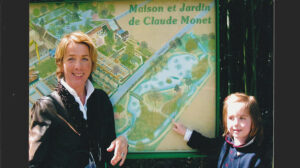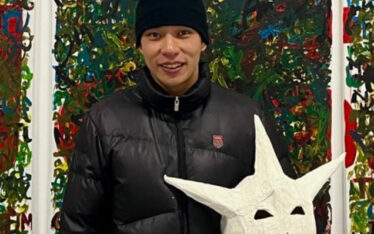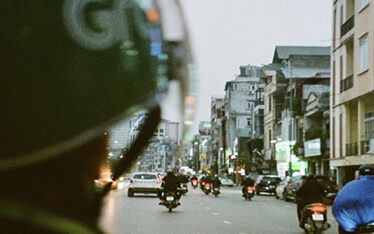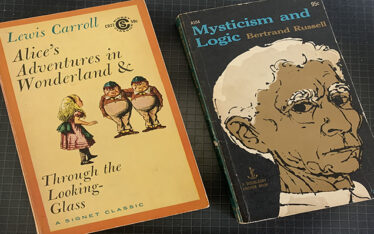
Life is but one part of a giant jigsaw puzzle. Its pieces meticulously mismatched. Reshuffled. No two fully align and sync. Nor interconnect. Truth be told, far better when one can reach out and touch an object. Feel its texture, taste its flavors, hear its sound. I trace its shape, holding the object in my fingers. Something very real. To grasp the pages of a newspaper provides an immediacy. An irreparable contact. Closes the circuit. Energy flows. By contrast, in going digital, distance must be factored in. Dealing virtually, with distance, a barrier forms. And yet, both routes are plausible. Both feed a young person’s desire to explore.
Legendary French writer Marcel Proust once wrote: “The real voyage of discovery consists not in seeking new landscapes but in having new eyes.”1. To fully appreciate his words, I wholeheartedly welcome culture with open arms. It stimulates the mind, stabilizes my emotional wellbeing, sharpens my insight and probes the depths of my subconscious. Culture is the key that can unlock those virtual doors to our imagination.
Early exposure
As a youngster left to my own devices, I might well have opted to stay close to home. Probably would have grabbed a sawed-off broomstick and headed outside to the stoop in front of the building to play stickball with friends. Whereas, whenever my mother took me out to see a stage play, a museum or a music recital, that event opened a totally new world. A shame I had been only partially ready for such a journey. The performances we caught, both beautiful and inspiring, were something special. Too young to grasp their significance or their connection to what else was going on in the world, I certainly wasn’t ready to tune into the anthropological impact of culture. I needed time to evaluate. First, however, I needed to sharpen my focus and increase my exposure to the arts. Learning how to research an idea to gain understanding. All the answers out there. Just waiting to be discovered.
Walking down one street, again and again, the objects we pass take on a life. First assuming an original size and shape, they even then can acquire a distinctive scent. How everything depends not only on the time of day but on the available natural light. My own inner, psychological state illuminates what I see. According to how I feel. To what I’m thinking. I recall remarkable 20th-century novelist, journalist, and diarist Anaïs Nin clarifying that… “We don’t see things as they are, we see them as we are.”2.
Relative colors, proportions and shadows change according to one’s mood. They become entirely a projection of our emotions. Ask a dozen people to describe an object they view at the exact same time each day and from the exact same angle. Their answers, however, will vary dramatically. Each person may assume an identity for the moment to differentiate him or herself from the others we observe. We must evaluate the context of the words they speak, how their usage applies and weigh their emphasis.
Options narrow
Having often dreamt of becoming a performing artist. I know I can never be one. Repetition is forever essential to an artist’s routine of flawless memorization and recitation. Be it a speech, a song, a poem, a play, a screenplay or a musical composition. Content must flow in proper sequence. Each phrase has to strike the ear in the right, recognizable order. Too bad my speaking voice is so stubborn. It refuses to ever say anything the same way twice. Have to keep everything sounding fresh. No matter what I hear or feel each time, my words need to break new ground. They should describe a unique experience. Inevitably, I can’t say why. But variation does prove thoroughly invigorating and refreshing and has become an integral part of my vocabulary.
Art is also a means. It creates awareness and conveys ideas. The late Leonard Bernstein, renowned American conductor/composer, believed: “A work of art does not answer questions, it provokes them; and its essential meaning is in the tension between the contradictory answers.”3. “Bernstein was, in many ways, the most important American classical figure of his generation.”4. He so astutely stressed the significance of all aspects of culture, something that can easily get overlooked today.
By limiting our focus to the immediate potential to generate revenue, our vision grows myopic and will restrict any path to the future. Society still requires individuals to develop a well-rounded existence. We must advocate both exposure to and experience with living life to the fullest each day. Things happen. In 1989, the unexpected fall of the Berlin Wall signaled the collapse of communism as a dominant force in Eastern Europe. On Christmas Day that year, Bernstein led an orchestra and soloists, representing the five different nations involved in the divided state of Germany: the U.S., the U.S.S.R., U.K, France and of course Germany itself. This historic celebratory concert to commemorate this unbelievable new beginning was heard by both east and west. Bernstein conducted one of the most spectacular versions ever of Beethoven’s Ninth featuring Schiller’s Ode to Joy, which had appropriately been renamed Ode to Freedom for the occasion. Here, culture and history seamlessly banded together. The reverberation that followed transcended continents.
Unsurprisingly, when in Paris, our daughter Caroline, at age five, had little interest in joining Elizabeth and me to visit any museums or galleries. When we set out on a day trip by train to Giverny, however, her indifference soon gave way. On visiting Claude Monet’s house and gardens, Caroline was drawn to the distinctive country furnishings that filled his house and curiously sniffed the air as we strolled through the artist’s combined kitchen, dining room, imagining what might have been in the oven for dinner. She then became increasingly fascinated by the stunning green and white blanket of fanciful lily pods, floating across a pond in back. Together, they brought the entire scene alive.
Caroline readily identified with the same floating flora depicted in several extraordinary Monet paintings we saw at Le Grand Palais back in Paris. When we visited the posh 16th district to see the Musée Marmottan Monet, Caroline stood mesmerized in front of Monet’s larger-than-life size canvas again filled with his lily-pod imagery. Thoughts flowed. They spawned ideas. Visions shifted as they steadily took shape. These reminded her of the ones we had seen earlier in Giverny. When we stopped for a hot chocolate at a nearby café, she made even more of a connection. There she became inspired to sketch her own primitive version.
Accessibility
Also in Paris, Elizabeth and I took Caroline to a retrospective of work by René Magritte the most influential Belgian artist of the 20th century. Magritte had thoroughly broken so many existing rules to, in turn, create his own. And those he then went on to break as well. Caroline became intrigued by his imagination, how he portrayed night-for-day and how his train engine shot white swirls of smoke as it sped midair from within his fireplace.
As she watched, unable to turn away, her own thoughts rapidly began to percolate. They overcame her. Soon she couldn’t hold back any longer. Caroline, sliding her denim rucksack off her back, plopped it down next to her feet. She yanked out a sharpened pencil and her notebook. Her imagination rapidly awakened as she began to sketch her own primitive imagery of a narrow bottle with a flattened flower stuffed inside. This she also had pulled from the rucksack. Erasing a couple of random pencil strokes, she blew the lint off the page and applied two sharp, crisp new lines that brought the work-in-progress to life as she added her signature across the bottom.
Culture reembodies many aspects of a particular life and times. For a child, those appear comparatively simple and straightforward. But nonetheless alive and captivating. For a child, there is no place for anything static. A connection to create basic excitement is not just needed but essential. No one understood this better than American film director, Tim Burton. Burton had started his professional career as an artist and an animator.
In 2011, when Caroline was ten, the Los Angeles County Museum of Art presented an exhibition of Burton’s work as an artist. Best described as Expressionist. “Expressionism emerged in the early 20th century as a reaction to the realism of the time, focusing on expressing emotions and subjective experiences through distorted and exaggerated forms.”5.
“Taking inspiration from popular culture, fairy tales and traditions of the gothic, Burton has reinvented Hollywood genre filmmaking as an expression of a personal vision.”6. His artwork there, on display with its web of illusion, in the museum, similarly held Caroline’s unwavering attention. Further inspired, she once more grabbed pencil and notebook and let her vision flow through her fingers. For young people when their imagination can be set free, they become their own source of inspiration. Thoughts flow, ideas bloom and visions continue to shift as they take on a more lasting shape.
As therapy
Having learned to draw and to paint without any formal training, Caroline communicates, on a regular basis, through her images as if an integral part of another language. As a high-school senior, she wrote a paper for an Advanced Placement course in College Research that explored using art as therapy for homeless students and their families to build self-confidence. It offered these people a means to express themselves and provided an incentive to communicate their feelings by visualizing thoughts through expressive images, enabling an individual to do not just say to successfully reestablish a student’s self-confidence and show how an image not only can express multiple thoughts in multiple forms to multiple individuals, but also provide the creator of that image a definitive sense of his or her self-worth.
_____________
footnotes:
1) Marcel Proust (1925). “The Fugitive,” volume 6 of “The Search for Lost Time”.
2) Anaïs Nin (1941). “The Diary of Anaïs Nin”.
3) Leonard Bernstein (2007). “The Infinite Variety of Music”, p.141, Amadeus Press.
4) Adam Kampe (2018). Art Talk with Ted Libbey on Leonard Bernstein. National Endowment for the Arts.
5) R. Bernstein, J. Reid and K. Johnson (2011), “Tim Burton: The Artist’s Process“, Museum Associates/LACMA.
6) M. Liberman (2011), “Tim Burton’s Contagious Creativity“, LACMA Unframed.
(c) 2024 R.J. Levin. All rights reserved.
about the article
Reflecting on the options we face expanding our vision through exposure to culture.



